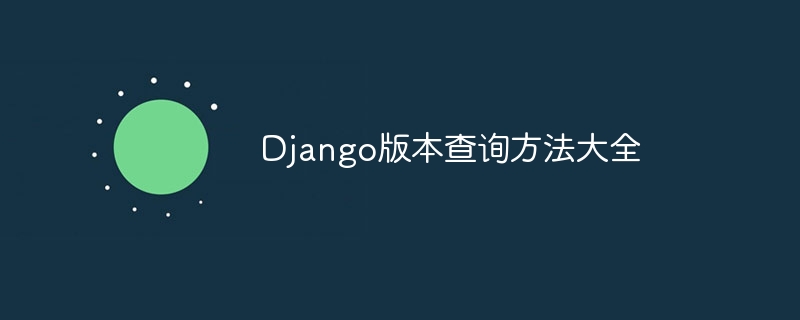

Complete list of Django version query methods, specific code examples are required
Overview:
Django is an open source web application framework that is widely used on the Web development. It is simple, flexible, and efficient, and can help developers quickly build powerful web applications. For developers, it is very important to understand the Django version currently used and the related query methods. This article will introduce in detail the method of Django version query and give specific code examples to help readers better apply the Django framework.
Method 1: Use the command line
to open the terminal (or command prompt) and enter the following command:
python -m django --version
Method Two: Query in the Django project code
You can directly check the Django version number in the project's settings.py file:
import django print(django.get_version())
import django
from django.core.exceptions import ImproperlyConfigured
REQUIRED_DJANGO_VERSION = '2.2'
if django.VERSION < tuple(REQUIRED_DJANGO_VERSION.split('.')):
raise ImproperlyConfigured(
f"Your Django version({django.get_version()}) is not compatible. "
f"Please install Django {REQUIRED_DJANGO_VERSION} or newer."
)This code will compare the currently used Django version with the required version. If it is lower than the required version, an exception will be thrown and prompted to install a new Django version.
import django
print(f"Django version: {django.get_version()}")
print(f"Release date: {django.__date__}")
print(f"Python version supported: {django.VERSION[0]}.{django.VERSION[1]}")This code will output the currently used Django version number, release date, and supported Python version.
import django
major_version = django.VERSION[0]
print(f"Major Django version: {major_version}")Summary:
Through the above code example, we can easily query the version number of Django and verify whether the version meets the requirements. In addition, we can also get more version information, which is very helpful for developing and maintaining Django projects. I hope this article can help readers better apply the Django framework and develop excellent web applications.
The above is the detailed content of Complete Guide: Finding Django's Version. For more information, please follow other related articles on the PHP Chinese website!




